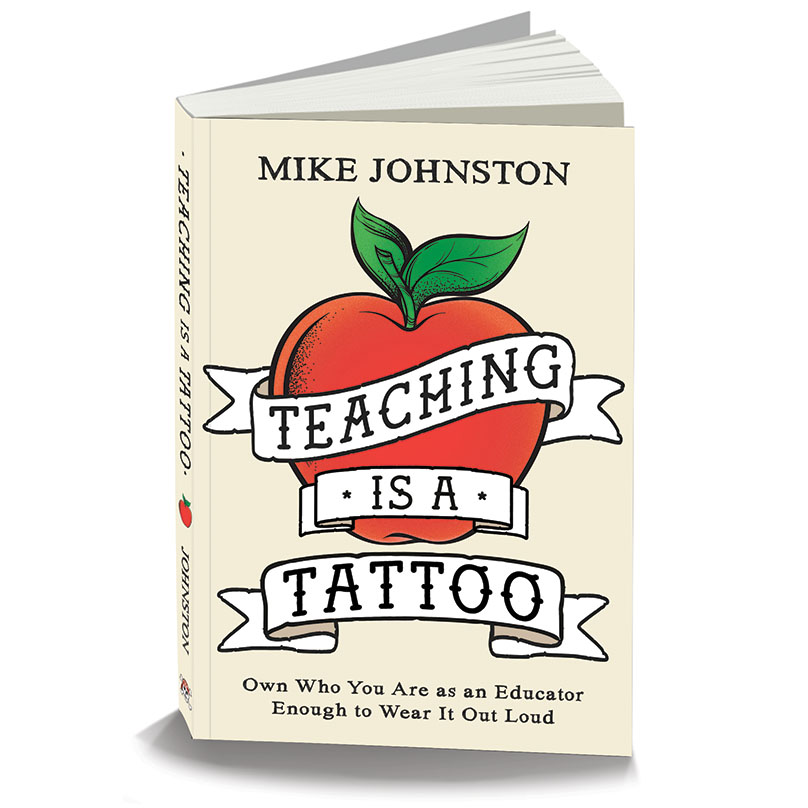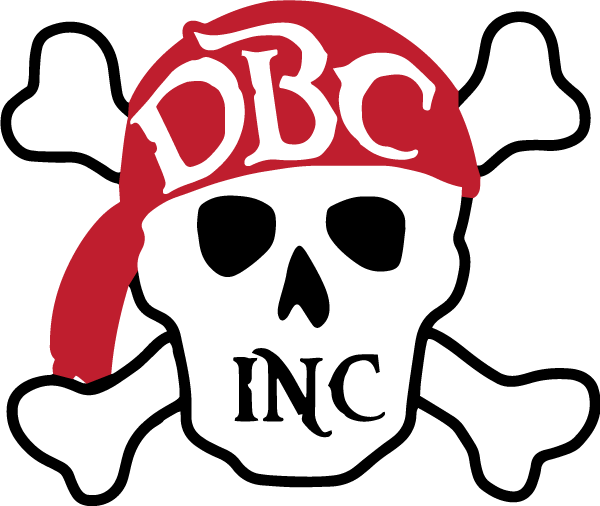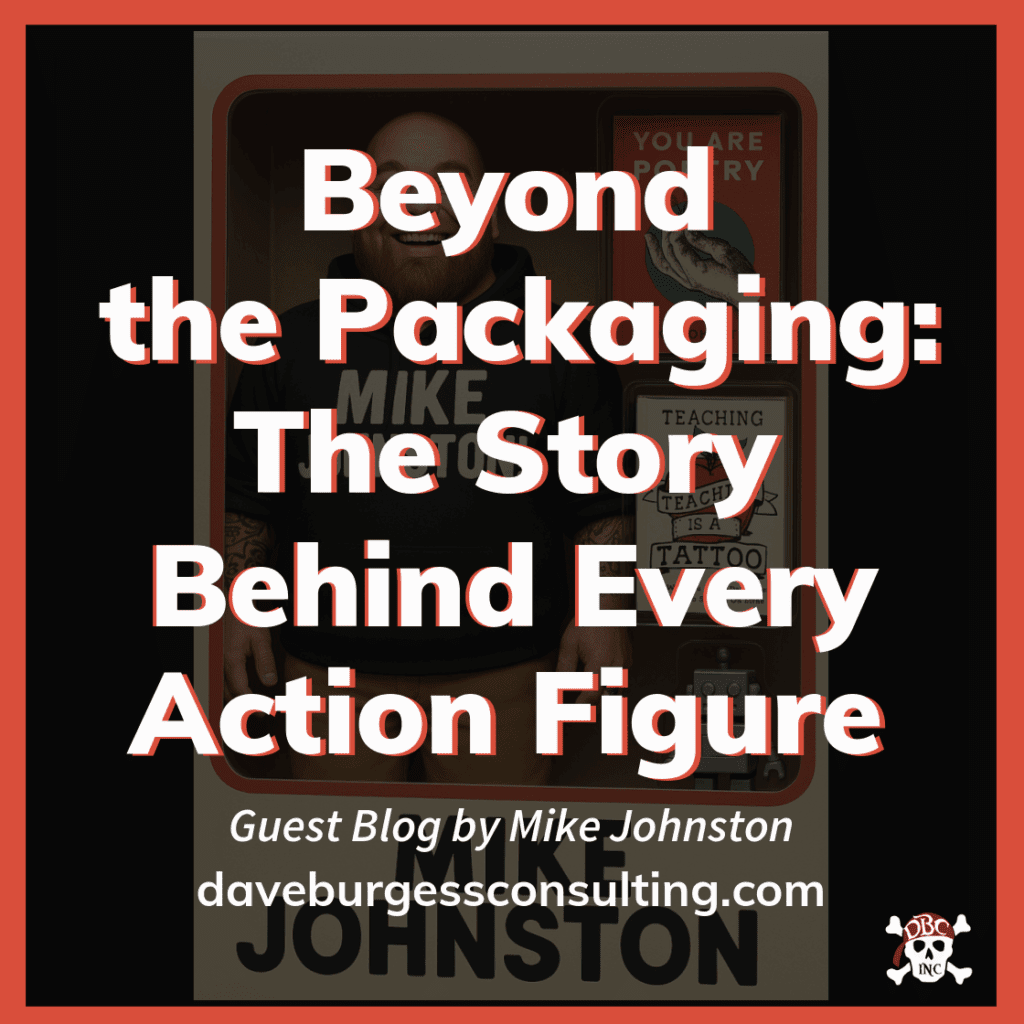Today's guest blog is brought to you by a poet, storyteller, and award-winning Indigenous educator--Mike Johnston! Mike is also a champion slam poet! He has performed and taught internationally, fostering poetry communities and youth education. He is the outstanding author of You Are Poetry and Teaching Is a Tattoo and is dedicated to creating spaces for people to share and amplify their lived experiences.
Take it away, Mike!
Guest Blog
We call it collecting action figures.
I used to be a little shy about admitting that I collect action figures. My collection is oddly specific. Some of my collection is based on action figures that are nostalgic for me, with a focus on Transformers. Some of my collection focuses on Jurassic Park or Ninja Turtles. The strangest and most weirdly specific aspect of my collection is how deeply dedicated I am to collecting action figures based on actor Paul Rudd. I have Paul Rudd action figures that vary from Paul Rudd as Ant-Man to Paul Rudd as Brian Fantana in Anchorman (one of which smells like cologne!) to Paul Rudd as Mr. Grooberson in Ghostbusters. Admittedly, none of these have value beyond my joy.
I used to think I was strange as a full-grown man who collects action bizarrely specific action figures, but then I had a conversation at a table with other educators, some of whom are several rungs higher than me on the administrative scale, all of whom I have deep respect for, started talking about their own collections. Star Wars action figures. Wrestlers. Superheroes. Video game characters. All specific to the person collecting them. All of them bringing deep personal meaning and joy to each collector. The more we talked about these collections, the more I started to understand that, whether plastic or people, we all collect action figures in our lives as educators.
Plastic action figures are just plastic molded into shapes (sometimes of Paul Rudd). Plastic isn’t expensive as a material. Its value mostly revolves around the things we can make it into. When we make plastics into action figures, they’re still plastic, but we’ve made it into a thing that carries a story, a memory, a sense of connection to something so much bigger. That’s where it starts to become something priceless for us. I don’t like plastic at all. It kills me as an Indigenous Educator who spends a lot of time bringing students to learn on the land, learn from the water, and there are always plastics out in those natural spaces where it shouldn’t be. I have a very negative feeling towards plastics. But when they’re shaped like a transforming robot from my childhood, I fall in love.
In our lives as educators, there is a similar experience. Students start on paper for us. They start as files and tests and reports. They start as student data sheets, as classroom numbers, budgets, contact time, and contract calculations. Before we get to know their stories, they are names on roll sheets, they are the amount of pencils and pens we need to order, they are skin and bone and muscle that we need to make sure there are enough chairs and desks for. But then we get to start building relationships, we get to start to hear stories and go on adventures together like cartoon episodes. We have the most wonderfully humanist job to do. Regardless of whether we are classroom teachers, administrators, student services, custodial staff, bus drivers, everyone at any level of the exceptional education careers we are privileged to do, starts their collection as soon as we move past the plastic and start building in connections and stories. Past the packaging and how they’re displayed, we start to see them as action figures.
It is their action that creates how we see them as figures. When they take action, when we take the time to interact with them, have adventures, play, and get to know their stories, that is when we really build our collections and build value in these figures through action. It is absolutely essential for us to understand that others do the same thing with us. Before students and colleagues get to know us, we, too, are just packaged, displayed molded plastics. We’re the shape of a thing that they recognize, but until they interact with us, we’re not a valued and beloved part of their collection. We all come in different sizes and shapes, like GI Joe to My Little Pony. Like those action figures, we all carry different accessories, different skill sets, and different ways to play and interact with each other. It is in action and interaction that our connection is created and our stories are valued. The most important word when we talk about collecting action figures is absolutely action.
That action is what I’m inviting you into, both to value and interact meaningfully with those actions, and to me mindful of the fact that there are always others doing the same as you. Come into this work with deep appreciation for these opportunities to have the collection of action figures that you have. Your collection, like mine, is absolutely unique to you as an educator. While you may work in shared environments and have interactions with shared students, each individual educator will invariably and invariably have their own collection that is unique to them. You’ll have interactions, stories, and moments that will put value on your connection and relationship to each and every one of those incredible human beings that started out as student numbers on paper. So take the time to build your action figure collection. Look to the human beings, staff and students, who are there around you in the work. Ask them their stories, see them for who they are, give them opportunities for action, take action alongside them, and most importantly, be unabashedly, vocally proud of your action figure collection.
Thank You, Mike!
Thanks, Mike! Love this post. It's such a beautiful reminder of the priceless value of human connection.
Don't forget to check out his amazing books, You Are Poetry and Teaching Is a Tattoo! And, follow Mike on X by clicking right HERE.
You won't be disappointed!



